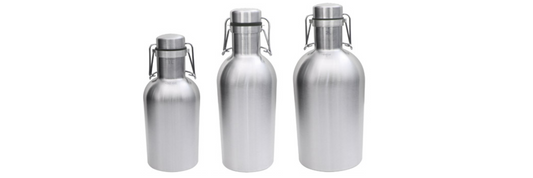When it comes to energy-efficient insulation solutions, bubble wrap insulation is often considered for its lightweight and effective properties. Available in both single and double layers, bubble wrap insulation is a popular choice for a variety of uses, including homes, warehouses, and industrial settings. The key to deciding which type to use—double vs. single bubble wrap insulation—lies in understanding the differences between the two in terms of thermal efficiency, cost, durability, and best-use cases. In this article, we will break down the differences between single and double bubble wrap insulation, helping you decide which option best suits your needs.
- What is Bubble Wrap? Bubble Wrap Applications
- Foam vs. Bubble Wrap: Which Is Better for Packaging?
- Anti-Static Bubble Wrap: What It Is and When to Use It
- Bubble Wrap Sizes and Their Uses: A Comprehensive Guide for Packaging
- Exploring Best Bubble Wrap for Fragile Items
What is Bubble Wrap Insulation?
Bubble wrap insulation consists of plastic bubbles that trap air, creating an insulating barrier. These bubbles are typically sandwiched between two layers of reflective foil. The foil reflects radiant heat, while the air-filled bubbles provide an additional layer of protection by reducing heat transfer via conduction.
Bubble wrap insulation comes in two main varieties:
- Single Bubble Wrap Insulation: One layer of air-filled bubbles encased between two reflective surfaces.
- Double Bubble Wrap Insulation: Two layers of air-filled bubbles sandwiched between two reflective surfaces.
Double vs. Single Bubble Wrap Insulation
Single Bubble Wrap Insulation
Single bubble wrap insulation features one layer of air bubbles that provide modest insulation. Its primary benefit comes from the reflective foil, which reflects up to 97% of radiant heat. However, because it only has a single bubble layer, its ability to block conductive heat transfer is more limited compared to the double bubble option.
- Best suited for: Environments where radiant heat is the primary concern, such as attics or garage doors.
- R-Value: Around R-1.1 to R-1.3, depending on the installation.

Double Bubble Wrap Insulation
Double bubble wrap insulation features two layers of bubbles, providing better protection against heat conduction. The additional bubble layer increases its ability to trap air, making it a better insulator overall. Like single bubble wrap, the reflective foil still reflects a high percentage of radiant heat, but the added air bubbles enhance its overall insulating properties.
- Best suited for: Spaces requiring enhanced thermal resistance, such as warehouses, metal buildings, or pole barns.
- R-Value: Ranges between R-3.0 to R-4.0, offering greater thermal efficiency.

Comparison Summary
- Single Bubble: Effective against radiant heat; lower conductive heat resistance.
- Double Bubble: Better for both radiant and conductive heat insulation due to the extra bubble layer.
Cost: Which is More Economical?
Single Bubble Wrap Insulation
Single bubble wrap insulation is less expensive than double bubble wrap due to its simpler construction. It’s a cost-effective solution when radiant heat protection is your primary concern, and you don’t require high resistance to conductive heat.
Cost: Typically 30% to 50% cheaper than double bubble wrap insulation.
Double Bubble Wrap Insulation
Double bubble wrap insulation comes with a higher upfront cost due to the additional layer of bubbles and improved insulating capacity. However, this type of insulation can pay off in the long run if you need more comprehensive thermal protection.
Cost: The higher initial investment may be offset by energy savings over time, especially in environments that experience high heat fluctuation.
Comparison Summary
- Single Bubble: More affordable upfront, ideal for low-budget projects where radiant heat is the main concern.
- Double Bubble: Higher initial cost but potentially better long-term savings in spaces with high heating/cooling requirements.
Durability: Which Lasts Longer?
Single Bubble Wrap Insulation
Single bubble wrap insulation is durable enough for light-duty applications, but it is less robust than its double-bubble counterpart. In high-impact environments or areas with heavy foot traffic or exposure to extreme temperatures, single bubble insulation may wear out more quickly.
Durability: Sufficient for low-impact applications, but may need replacing sooner in harsh environments.
Double Bubble Wrap Insulation
The extra layer of bubbles in double bubble insulation provides not only better thermal resistance but also greater durability. It can withstand tougher environments, such as industrial spaces or outdoor applications, for a longer period of time.
Durability: Ideal for long-term use in warehouses, commercial buildings, and other demanding environments.
Comparison Summary
- Single Bubble: Adequate for residential or low-impact areas.
- Double Bubble: Better suited for high-impact or industrial environments, offering longer-lasting protection.
Best Use Cases: Where to Use Each Type of Insulation
Single Bubble Wrap Insulation
Single bubble wrap insulation is ideal for applications where radiant heat is the primary issue, and thermal conduction is less of a concern. It works well in spaces where budget is a key factor, and you don't need to worry about significant heat transfer.
-
Best use cases:
- Attic insulation: Reflects radiant heat from the sun.
- Garage doors: Prevents heat from entering or escaping through metal surfaces.
- HVAC ducts: Provides basic insulation for air ducts, preventing heat loss.
Double Bubble Wrap Insulation
Double bubble wrap insulation is best suited for environments where both radiant and conductive heat must be managed. Its superior insulating properties make it ideal for industrial, commercial, and more demanding residential projects.
-
Best use cases:
- Warehouses: Ensures better temperature regulation in large, open spaces.
- Metal buildings: Provides strong insulation for structures made of conductive materials.
- Pole barns: Helps maintain stable temperatures in agricultural buildings.
FAQs: Double vs. Single Bubble Wrap Insulation
Which is Better For Warehouse Insulation?
Double bubble wrap insulation is generally better for warehouses as it provides more comprehensive protection against both radiant and conductive heat.
Can I Use Single Bubble Wrap Insulation For Residential Purposes?
Yes, single bubble wrap insulation works well in residential applications where radiant heat is the main concern, such as in attic spaces or garage doors.
Is The Installation Process Different For Single And Double Bubble Wrap Insulation?
No, the installation process is quite similar for both types. Both can be stapled, taped, or adhered to surfaces, depending on the application.
How Long Does Bubble Wrap Insulation Last?
Both single and double bubble wrap insulation can last several years, but double bubble insulation tends to be more durable and better suited for high-demand environments.
Is Double Bubble Insulation Worth the Higher Cost?
Double bubble wrap insulation is worth the investment for applications requiring better temperature control and durability, such as in commercial or industrial settings.
Conclusion
The decision between single and double bubble wrap insulation comes down to the specific needs of your project. If you’re primarily concerned with radiant heat and need a cost-effective solution, single bubble wrap insulation will likely meet your needs. On the other hand, if your project requires greater thermal resistance and long-term durability, double bubble wrap insulation is the better option, especially for warehouses, metal buildings, and other commercial or industrial settings.









